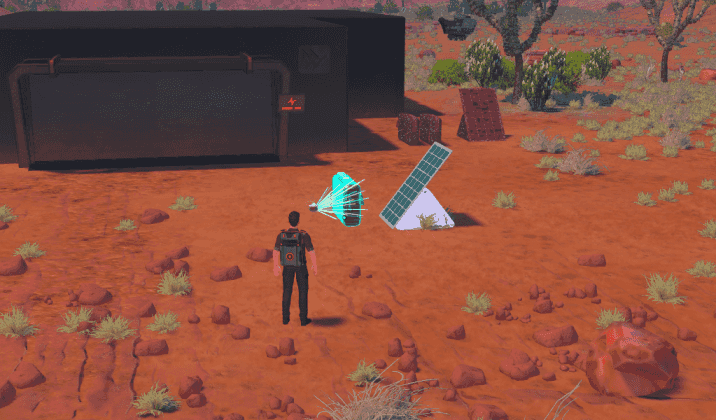Maker Log #4 - The Simulated World of The Maker Way

The Design Pillars of The Maker Way
Nailing the game’s design pillars provides incredible focus. Defining a core set of principles allows me to filter through hundreds of possible tasks and ideas I collected over time.
After searching for the core game design elements for a while, it’s now clear to me that the magic of the game lies in creating powerful machines to overcome adversity in an immersive, hostile world.
In a list form, the game pillars are:
- The Exhilaration of Making – the elation from operating machines and base-building parts that you designed yourself
- Deep, Immersive World – seeing your creations interact with a living, reactive world
- Overcoming Adversity – persevering in your fight against the massive odds stacked against you
In this post, I’ll discuss the current progress in creating an immersive world.
Inspiration and Focus
As a mostly solo dev, it’s comforting to know that some of the most deeply simulated worlds were created by small teams. Dwarf Fortress is the gold standard, with a simulation that spans from geological processes to the emotional states of creatures. It’s also been in development for 19 years.
Considering the other pillars of the game, I decided to focus on elements that interact with the act of creating machines and bases. Specifically, for Early Access I settled on:
- Foundation - the passage of time, day-night cycle, basic weather
- Energy - generation and consumption of energy, particularly how it’s used by your machines and by enemy factions
- Enemies - simulating sophisticated enemy activities
Foundation
A day-night cycle is common in many games and fairly basic. However, the passage of time becomes interesting if day and night have a meaningful impact on gameplay.
Currently, the day-night cycle affects electricity generation through solar panels. They don’t generate energy at night.
As for weather, in Early Access, the only impact will be from wind. You can use wind turbines to generate electricity from wind.
Some enemy robots operate only at night and use daytime to recharge.
Energy
To operate machines and bases, you’ll need energy.
Energy can be:
- Converted - converting fuel to electricity
- Generated - using solar panels or wind turbines (for electriticy generation)
- Stored - energy must be stored, so you need storage capacity (tanks for fuel or batteries for power)
One early example of this is the research facilities you discover. Initially, they’re locked because their doors can’t operate without power. It’s up to the player to connect them to a power source.
I intend to add more energy types later — I’m looking at you, Nuclear Fission!
 After placing a battery, if you wait a bit, it will have enough electricity to power the facility
After placing a battery, if you wait a bit, it will have enough electricity to power the facility
Enemies
Overcoming adversity takes several forms in the game. One is managing scarce resources needed for printing machines and base parts. Another is using your machines to overcome obstacles and access special areas.
Important areas in the game are defended by enemy entities. There are two major enemy factions. One of them, DTHP (Department of Technology Harm Prevention), is a government agency established to stop technological progress.
They both use robots, rovers, drones, and radars to prevent you from advancing tech. For enemies to feel believable, they need to follow the same simulation rules as your machines. That means even in Early Access, enemies will need to recharge at charging stations.
This creates a pretty meaningful overhead in the development process. I suspect it’ll pay off, because it also creates interesting gameplay opportunities — like cutting off the power supply to enemy charging stations.
Experiencing the Simulation
Some parts of the simulation are immediately visible, like time of day. Others, like wind, are invisible.
To give players a sense of wind strength, vegetation reacts dynamically to wind changes. Going a step further, wind volume increases or decreases based on strength. I know most players won’t notice — but I believe these small details matter.
The Maker Way is a long-term project. It might take 19 years to reach the simulation depth of Dwarf Fortress. But even these early simulation elements already make a huge difference in gameplay.
Thanks for reading!
If you’re interested in participating in the closed playtest, please join our Discord server.
